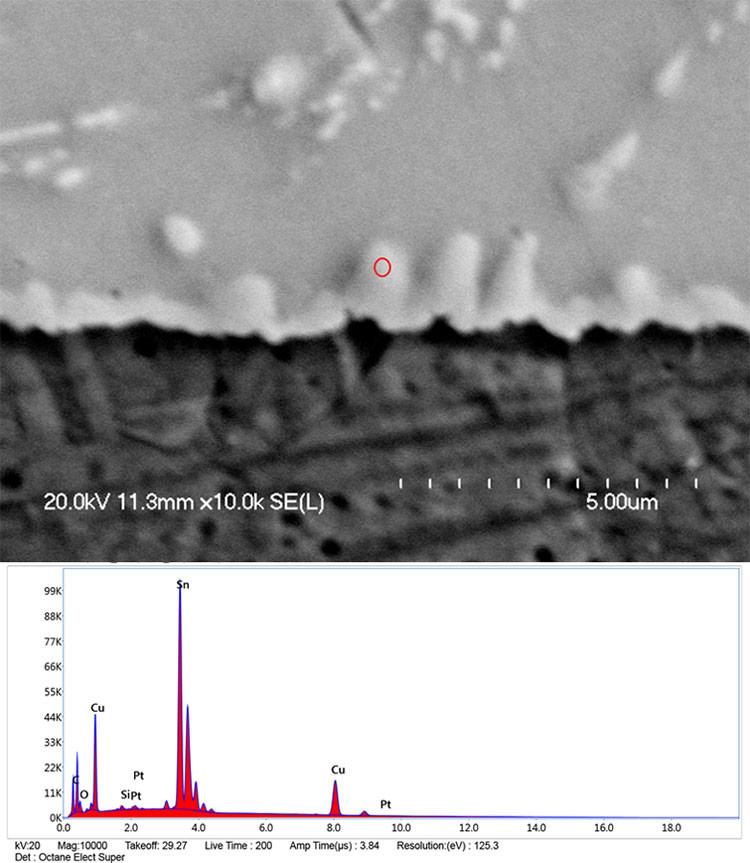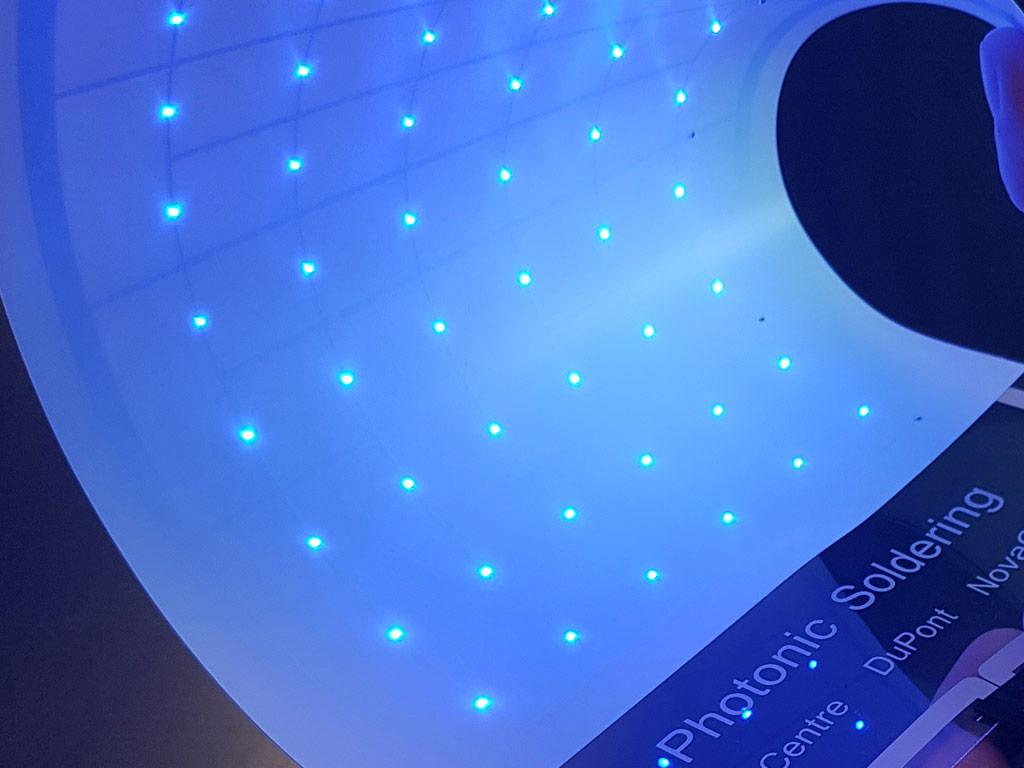Current Material Options
If you have ever disassembled any electronic device, you know that inside you’ll find a variety of components, such as resistors, capacitors, chips and controllers that make everything work. All of these components usually sit on a rigid board (with copper tracks on it) that allows these parts to talk to one another. A major consideration in the choice of materials for building conventional electronics is the material’s ability to withstand high temperatures (a required step in building electronic devices). But if those high thermal requirements could be relaxed, it would open up a wide variety of material options which, in turn, would allow new forms and functionalities – while reducing unit costs.
Conventional Soldering and Reflow
One of the processes that dictate the high thermal requirements of electronics is soldering. Conventional soldering processes depend on thermal processes that cause a metallic alloy to reflow and form strong joints between the pads of components and the conductive tracks. A good solder joint ensures reliability in structural strength, as well as not losing communication between the different components that make up the electronic assembly. If we could ensure the advantages of conventional solder reflow processes without having to worry about the thermal process destroying our substrates, new forms of lightweight, stretchable, bendable, inexpensive, yet reliable electronics could be produced. Selectively heating the solder using a laser beam is one way to go. However, with a focused laser beam, usually only a single joint is soldered at a time. With the increased number of components on every panel – where processing speeds are concerned – this can create a bottleneck
Enter Photonic Soldering in Printed Electronics
PulseForge tools used for photonic soldering in printed electronics employ white light over a broad area that allows whole panels to be processed within a couple of seconds.
PulseForge tools use high-intensity, short-duration (in the order of µs to ms) pulses of light that allow fine-tuning of thermal ramp rates and thus have fine control over the material and structural properties of the final solder joints.


And the broad area light means solder reflow happens simultaneously at all terminals of the same component, which reduces soldering errors, such as tombstoning, while allowing the alignment of components.
PulseForge photonic soldering tool models are suitable for R&D scale as well as SMEMA compliant assembly lines.

|
Written by Rudy GhoshAs the Technical Program Lead at NovaCentrix, Rudy Ghosh helps translate technical innovations into customer ready products. He works closely with NovaCentrix’s customers, technology partners, and collaborators across the world to solve technical challenges and identify new avenues for the application of NovaCentrix’s industry leading technologies in PulseForge tools and Metalon inks for printed and flexible electronics. As a technical expert in the printed electronics industry, he is often an invited speaker for a variety of printed electronics conferences. Rudy also works with the global business team to define and engage in commercial opportunities related to the technical program and furthers those areas of opportunity through industry outreach and engagement. Before joining NovaCentrix, Rudy was a Post-Doc at the Microelectronics Research Center at the University of Texas at Austin, where he led the Center’s research into the synthesis of 2D materials. Rudy holds a PhD in Physics from the University of North Carolina at Chapel Hill and a MS in Physics from the Indian Institute of Technology, Bombay. Rudy has authored over 30 publications in a variety of technical journals. |
